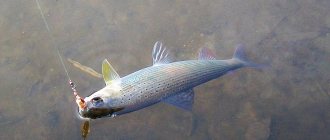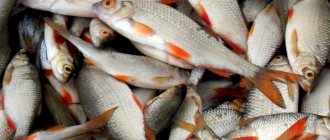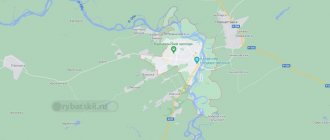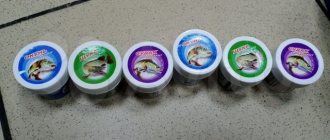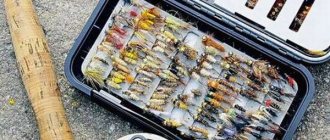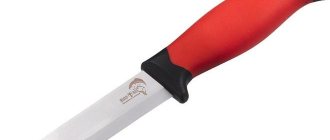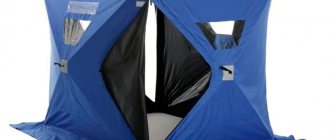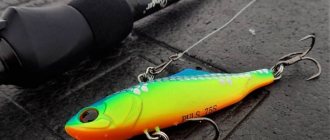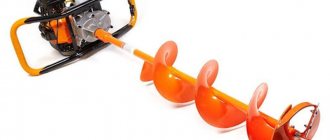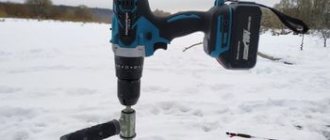One of the most exciting and exciting types of fishing is fishing with flies - artificial baits that imitate insects, crustaceans and fry. Given its specificity, this activity requires certain practical skills and knowledge of the behavioral characteristics of various species of fish. In addition, you will need special gear and a set of baits that are unusual at first glance.
Fishing with flies is not a widespread type of fishing, but it has its own history and many fans. This bait was used back in the 15th century in England when fly fishing. But this type of fishing has become truly popular among the Americans.
Today, fly fishing is both a sport and an art at the same time. Sports fishermen compete not only in the number of trophies caught, but also in the ability to personally make one or another type of flies that have the maximum resemblance to living organisms.
Fly Selection
The advantage of flies over their live counterparts is their ease of use. This universal bait is suitable for both catching non-predatory fish and predators.
All flies are divided into several types:
- dry (DryFlies);
- wet (WetFlies);
- nymphs;
- streamers;
- emergers;
- fantasy;
Dry flies resemble dragonflies, mayflies, flies, caddis flies, botflies, wasps and other insects that have fallen on the water. They are made in such a way that they do not sink in water and are designed for catching fish from its surface. They are held on the water by legs and a tail knitted from hard bird feathers. To make dry ones lighter, the hooks for them are made of thin wire. Until recently, all dry flies were tied in a fantasy style, which did not require resemblance to real insects.
With the advent of new synthetic materials, they are increasingly being manufactured in a super-realistic style, providing for the maximum imitation of living organisms. Dry flies are considered universal and are excellent for catching asp, bleak, chub, rudd, and roach.
Nymph
Wet flies are baits that look like drowned insects, small crustaceans, water beetles, leeches, tadpoles, as well as insect larvae developing in water. They are distinguished from dry flies by a very thin body, wings curved towards the bend of the hook, and the presence of legs and a tail. Wet flies are tied on a thicker hook.
This type of bait has proven itself well in fly fishing for grayling, salmon, and asp, but recently anglers have been using nymphs more often.
Nymphs are designed to imitate various insects at different stages of their underwater development from larva to pupa, which are part of the natural diet of grayling and trout. Because of this, almost all recent sport fishing competitions for these fish have been won thanks to nymphs. They are made in both fantasy and realistic styles.
The main requirements for such a bait are a clear imitation of the color of an insect for a specific body of water, the exact size and segmentation of the body, as well as a hook loaded with lead wire.
Streamers are similar to fry and are designed to catch large predators. This is the heaviest type of fly. The streamer hook is additionally equipped with tungsten or steel, which, when wired correctly, makes the bait look like a wounded fish.
Emerger
Emergers are a type of nymph that mimic an insect in its metamorphosis stage (between pupa and adult form). Grayling responds superbly to such bait, especially during the mayfly season. Independent tying of emergers has turned into a whole trend in fly making. There are even specialized clubs that unite craftsmen in this matter.
Fantasy flies are baits that have no prototypes in nature. Their size, color and shape can be anything.
They are divided into several types depending on the type of fish that is supposed to be caught:
- grayling;
- salmon;
- trout;
- asp;
- dace, etc.;
Fishing with fancy flies is based on knowledge of the behavioral characteristics of a particular fish, as well as its food preferences.
There is also such a type of flies as frame or decorative ones. They are knitted from expensive and exotic materials. Such flies are not used for fishing, but serve only as an exhibit at various collection exhibitions and knitting competitions.
[rs]
Gear used for fly fishing
For fishing with flies, you can use several types of gear:
- "Water Serpent"
A “water kite” or boat is a tackle consisting of a foam, wooden or any other floating body to which a fishing line called a “stave” with several leashes is tied. The main spinning line is attached to its other end. The “snake” is cast away from the shore with the expectation of its further movement along the current. This gear is used to catch schooling fish such as asp or grayling.
- “Peryatyaga” is a device consisting of two spinning rods located on different banks of the river. A “bet” with leashes is stretched between the spinning rods. To operate this gear you will need two people who will slowly move along the banks against the current. “Peretyaga” works well on rivers with moderate currents when fishing for chub and roach.
- Fly fishing is a classic tackle for fly fishing. It consists of a special fishing rod equipped with a long cord with a leash. Ideal for any conditions when fishing for chub, roach, grayling, asp, trout, salmon, etc.
- Spinning. Can be used both with a weighted float of the Sbirulino type, and with weighted types of flies.
Fly fishing and spinning tackle have gained the greatest popularity among fishermen due to their simplicity of design and versatility.
[rs]
Pheasant Tail with head
The Pheasant Tail is one of the oldest flies and is found in the fly boxes of all anglers who fish rivers around the world.
The fly imitates the larva of a mayfly butterfly, which is found everywhere except the Hawaiian Islands in the Pacific Ocean and St. Helena Island in the Atlantic Ocean.
Try fishing with Pheasant Tail from early spring until late autumn - it is a time-tested catchable fly!
Buy Pheasant Tail
Fly fishing gear
Fly fishing consists of the following elements:
- rod with reel;
- coil;
- cord with backing, running and leash;
- bait (fly);
A special rod is used for fly fishing gear. Today on sale you can find fly fishing forms ranging from 2 to 6 meters in length. They can be one- or two-handed. The latter are used for fishing at considerable distances, and casting the tackle is done with both hands.
One-handed fishing rods are more popular due to their ease of use. Most often, blanks up to 3 m long are used. Fly fishing rods are made of ultra-light carbon fiber. The weight of the longest blank does not exceed 200 g. Like all fishing rods, they are divided according to action from very fast to slow.
Also, for convenience when choosing, fly fishing forms are usually classified into classes:
- 1, 2, 3 classes - for fishing for bleak, roach, small chub using a dry fly in reservoirs with standing water;
- Class 4 - for the same purposes on narrow rivers with moderate currents;
- 5, 6 class – for catching specimens up to 2.5 kg;
- 7th class – for predators using nymphs or streamers;
- 8, 9 class – for catching large fish from 4 to 8 kg;
- 10-15 grades – for sea fishing;
The most common and popular fishing rods for our reservoirs are slow action blanks of class 5 or 6 with a length of 2.7 m.
In fly fishing, only inertial reels are used, or rather a separate type of them. The reel in fly fishing is not used when casting. Its role is to store the line, backing and running, as well as help in fishing for fish. Fly fishing reels are selected according to the class of the rod and the balance is checked.
There are three types of coils:
- direct action;
- reduction (multiplier);
- automatic;
Multiplier reel
The first type is a classic direct-action inertial reel, reminiscent of a regular spinning reel. Reduction models are distinguished by the presence of a multiplier in the design, which increases the speed of rotation of the spool, thereby accelerating the speed of winding the cord.
Automatic reels additionally have a special lever that locks and releases the cord. Models designed for hunting large fish have a powerful adjustable friction brake.
Since fly fishing gear does not include any loading, it is simply impossible to cast a regular fishing line with a bait such as a fly over a significant distance. That is why light fishing line has been replaced with a special heavy cord, which flies when casting due to its weight. Fly lines are classified according to the degree of buoyancy, specialization, weight and cross-sectional shape.
By buoyancy:
- floating (used for fishing with dry flies from the surface of the water);
- slowly sinking (used in cases where the bait needs to be buried a little, and its own weight is not enough for this);
- sinking (for fishing in the water column);
- partially sinking (can be used for various depths, the floating part provides reliable control of the retrieve even in strong currents);
By specialization:
- universal use (for fishing with any bait);
- for fishing using small dry and wet flies;
- for fishing using nymphs;
- for fishing with a streamer;
- for hunting large fish;
By weight and geometry:
- cylindrical - has a circular cross-section and one diameter along the entire length, marked with the letter L;
- double cone – has cone-shaped constrictions at both ends, marked with the letters DT;
- torpedo – the main weight of the line is in the front part, which provides a good casting range, marked with the letters WF;
- front cone – has a front cone-shaped narrowing, marked with the letters TT;
- “shooting head” - a separate type of torpedo with an even greater weight shift to the end, marked with the letters SH;
- “Scandinavian head” - a weighted “shooting head” used for two-handed fishing rods, designated Scandi;
A large fish caught on a hook can pull the entire supply of line from the spool in a matter of seconds and break the tackle. To avoid this, backing is first wound onto the reel - a piece of thin synthetic cord 30 to 300 meters long, and the main cord is tied to it.
If the tackle uses cords of the “shooting head” type, a piece of “running cord” is additionally tied to its end - a running cord that has a very smooth sliding surface. It ensures minimal friction in the guide rings when casting. “Shooting head” is never used independently without running.
The length of the leash and the thickness of the fishing line for fly fishing gear are selected based on the size and weight of the expected catch, as well as the fishing conditions. Usually they use a leash no longer than 30 cm from a fishing line of 0.08-0.2 mm.
Top brands
We recommend buying a fly rod from Shimano, Daiws or Vision. A little later we will publish a detailed review of all the best budget and premium fishing rods. The price of rods is from 10,000 to 30,000 rubles.
[rs2]
Fly Fishing for Beginners: A Step-by-Step Fishing Guide - Fly Selection and Techniques for Fishing with This Exciting Game of Fish.
For a short video course on the method of fishing using fly casting from many famous anglers, see below.
A practical guide to equipping a spinning rod with fishing line and bait: attach the reel to the spinning rod in the next article.
Fly fishing technique
Fly fishing is best in spring and summer, when fish feed on insects and spend most of their time in the upper layers of water.
A properly cast cast involves a soft (natural) splashdown of the bait. In this case, it should fall on the water before the cord. Otherwise, the fish will simply get scared and leave the place.
If fishing is carried out with a dry or wet fly, the casting location is selected based on the splash of water or visual identification of the fish site. If a nymph is used as bait, it is allowed to sink under the water, after which retrieval is carried out by tugging the cord.
There are two types of casting: regular and power. The normal one involves three steps: swinging back, increasing the length of the cord, and swinging forward. The back stroke should be strong enough and end with the rod in a vertical position. When the cord straightens, you need to pull it up with the fingers of your left hand and swing it forward, releasing it at the moment of shooting.
When power casting, the line is pulled during both the front and back strokes. This technique allows you to cast as far as possible.
For dry and wet flies on the current, you can use the simplest wiring - “to demolition”. To do this, the bait is delivered to the right place, after which it is sent swimming with the current. At the same time, it can be held by pulling the cord or sank by raising and lowering the rod. Having determined the bite, you should hook and fish with a reel.
Free-living caddisfly
Another type of caddisfly is the free-living caddisfly, which fishermen call the “bum”. These larvae do not build homes for themselves, but move along the river in a free flow.
Grayling loves these little worms and eats them throughout the season.
The nymph is knitted in two versions - without weight and weighted with lead.
A light version of the bait can be placed with a second fly, above a heavy lower one, for example, a caddis fly in a house. There is no need to be shy with the size, try fishing with a fly on a number 10 hook, these caddis flies can be quite large!
Buy "Free-living caddisfly"
Spinning tackle sbirulino
If mastering fly fishing techniques seems too difficult, you can try simpler gear - spinning.
Properly selected equipment and bait make it no less effective. In spinning fly fishing, a special heavy float is used - sbirulino or bombard. Its role is to load the gear to deliver the bait to the fishing spot. Sbirulino spinning tackle consists of:
- fishing rods;
- coils;
- float sbirulino;
- main line;
- leash;
- camel;
- baits (flies);
When choosing a fishing rod, special attention should be paid to two criteria: length and test indicator. You can purchase a special spinning blank, or you can use a match or Bolognese fishing rod with a length of at least 3 m. In this case, the longer the blank, the easier it is to control the tackle when retrieving. Considering that Sbirulino floats are quite heavy, it is advisable to use blanks with an average weight of 25-50 g. The rod action is selected taking into account the weight of the planned catch, but most often blanks with medium and slow action are used.
It is better to use a spinning reel, with a spool size of 1500-2500, depending on the size of the reservoir and the length of the blank. It would be nice if it was equipped with a reliable friction brake. He will help out when a large specimen comes across.
The choice of the float itself should be given maximum attention. Sbirulino is a special heavy float, often colorless, used in spinning fishing with flies as a load on the tackle.
According to the degree of buoyancy they are divided into:
- drowning;
- slowly sinking;
- floating;
This criterion is necessary when choosing a float for different fishing depths. Chub, trout and grayling, for example, hunt in the upper layers of water, and floating and slowly sinking sbirulino are suitable for fishing for them. Pike perch, on the contrary, prefers depth, and to catch it you will need a sinking float.
Sbirulino is a loaded float, i.e. it has a built-in weight.
Based on its location inside the float, sbirulino is divided into several types:
- with lower load position (Classiche);
- with a weight distributed along the entire length of the float (Moretto);
- with central cargo position (Competition);
- with top load position (Match);
- with weights at the top and bottom of the float (Magic);
Sbirulino Magic
Sbirulino with a lower position of the load sharply immerse the bait in the water, and are more often used for deep fishing. Moretto, on the contrary, does this smoothly, counting on the bite in the water column. For sensitive fishing for small fish, a float with a central weight and with an opposite weight is more suitable - they are more maneuverable. Sbirulino of the Match type lie horizontally on the water, and with slow retrieval they can turn over, which enhances the game with the bait.
As the main fishing line, it is customary to use fluorocarbon monofilament with a cross-section of 0.17-0.25 mm or thin braid up to 0.2 mm.
For fly fishing, the length of the leash must be at least 1.5 m. The thickness of the fishing line for it is selected based on the maximum weight of the expected catch (0.1-0.18 mm).
The swivel is used to prevent the tackle from twisting at the junction of the main line and the leash. The main requirement for it is discreet color and reliability.
Installation of Sbirulino spinning tackle is not particularly difficult. To do this, a fishing line is wound onto a reel, the free end of which is threaded through the axial hole of the float and knitted into a loop. The leash with the fly is tied to the main fishing line through a swivel, which additionally serves as a lower stopper for the sbirulino.
The technique of fishing with such gear differs significantly from fly fishing. If in the latter the main emphasis is on casting, then for sbirulino wiring is more important. The tackle is delivered to the right place by swinging it back until the rod is vertical and then sharply swinging it forward. When the tackle is in place, you need to pull it slightly towards you and start wiring.
[rs]
The wiring technique depends on the type of sbirulino
There are the following types of postings:
- With a floating float and a sinking bait (after casting, the tackle is pulled up so that the leash and line are stretched out in one line, then slowly pulled up using a reel, with pauses from 10 seconds to 1 minute);
- With a floating float and slowly sinking bait (even retrieve with small pauses);
- With a slowly sinking float and floating or sinking baits (slow, even movement in the water column, used for trout fishing);
- With a sinking float and sinking bait (uniform retrieving at depth, used for catching large predators).
Catching different types of fish
Since the fly is a bait that the fish constantly swallows, prepare a sufficient number of artificial insects. Experienced fishermen always have a large supply of different flies in stock. Usually 15-20 pieces are enough for one fishing trip, it depends on the intensity of the bite and the time spent on the pond.
Grayling
The grayling fishing season begins in the spring, at the end of May. The bait is carried out in two ways: either the fly floats freely with the flow or, conversely, it is pulled towards the shore. These movements of the fly imitate the behavior of insects in early summer. At this time of year, fishing is better with wet flies, as there are very few insects flying on the surface.
The photo shows flies that are good for catching grayling:
These flies are used to catch grayling
Often, when fishing for grayling, a dry fly is tied next to a wet one. This tandem allows you to see the bite. A dry fly, with its bouncing, will show you a bite, which is difficult to determine when a wet fly floats freely with the current.
In general, biting grayling is a special topic for fisherman. In order to see it, fishermen resort to various tricks. For example, they make a signal winding at the end of the cord with white thread or put a plastic tube on it. Those who are just starting to master the basics of fishing will need to learn how to identify grayling bites.
With the onset of summer comes the time for dry flies. A massive emergence of mayflies and other insects begins. If you managed to catch this moment, then the catch will be excellent. Fishing with dry bait will only be advisable if there are flying insects and a certain air temperature. Below 10 degrees, insects stop flying. Dry small flies should be set high on the hook and have a brush.
Grayling prefer softer flies with yellow or red bellies. Nymphs in muddy water are clearly visible to fish if they are pink or orange. But in clear water such bright colors will only scare away the grayling. If you haven’t yet picked up your catchy fly, then you need to remember that grayling still loves small flies.
The slower the current, the more similar the fly should be to its prototype. Moreover, we must not forget that the fish looks at the bait from the water, so it is especially important that the silhouette is as realistic as possible. Especially in fast water, the fish does not look closely at the bait; it manages to see the silhouette. In order to eliminate distortion, you need to choose an artificial front sight that is one size smaller than it actually is.
It is very difficult to choose the horizon for catching grayling with a nymph, since they fish with a wet fly underwater and it is not known where the insects are. Perhaps grayling collects larvae from stones or catches insects in the middle horizons.
In the video, watch how grayling is caught with a fly:
Asp
Asp are actively caught with a fly beginning in mid-summer. For asp, the most catchy bait is considered to be the wabik, invented many years ago. White feathers or fur are wound on a double or triple hook with thread. In order for this wabik to better float on the water, a foam ball is attached to it.
They catch asps not only with a wabik, but also with wet flies or streamers. The fishing technique is aimed at not spooking the asp. Therefore, they throw the tackle away from the place where it was found and lead it with jerks and twitches. In this case, one fly should be in the upper layer, and the second should jump along the water surface.
In the shallows the bait speed is faster than in the depths. To catch asp, the fly can be on the spoon itself or on a leash. You can catch two predators at once with a group of flies. This method of fishing is called "beard". This method is used to catch asp in the bottom layers, where it goes in spring, autumn and sometimes in summer. The larger the fly, the larger the specimen can bite.
Favorite colors of flies are pink, blue, white, yellow and, depending on the time of year, black. The game of the bait, the imitation of a living prototype, is very important. When fly fishing, you can catch a good asp on a grasshopper. If you are fishing with a streamer, then after casting you wait until it sinks to the bottom, then you lead the bait, at the same time choosing a little fishing line. Somewhere at a depth of up to 2 meters, the asp begins to peck at the streamer.
Since the asp has weak lips and can jump high out of the water when landing, it is necessary to prevent him from falling off. Do not make sudden movements or loosen the line.
In the video, the asp was caught using a spoon and flies:
Rudd
Catching fish such as rudd involves the use of effective bombard gear, also called sbirulino. This tackle combines the best features of fly fishing and spinning. Bombarda is a very catchy tackle, which also uses a fly.
In order to assemble the bombard you will need a rod with guides. The bombard is a special float, inside of which there is a tube through which the main fishing line is pulled. A bead is attached as a shock absorber after the float, then a leash is attached using a swivel. The role of bait is played by the fly, which clings to the bombard.
If it is necessary to sink the bait, a sinker is put on the bombard. Bombarda is distinguished by weight. Long-distance fishing is carried out with a bombard weighing up to 60 grams. Close casts are made with a light bombard from 1 to 5 grams. It is for catching rudd that connecting a light bombard with a fly will be the right decision.
For rudd, the most important thing is to find the right color of bait. It is better to choose flies that are white, yellow or gray. In mid-summer, rudd are well caught on streamers. If you are fishing in a place where there is a lot of algae, then the green color will appeal to this fish.
A splash on the water will show you the presence of a rudd; the bombard should be sent with an accurate throw a little further than this place. Then, reeling in the fishing line, lead the bait.
Another way to catch rudd is by tying several flies. As soon as the first fish grabs the bait, stop the rod and the lively rudd will begin to grab the free flies.
In the video they catch a rudd using a bombard with several flies:
Chub
Chub are caught using a dry fly. As soon as a fly falls to the surface in nature, the fish immediately shows interest in it. The main thing is that the bait gets into the chub’s field of vision. But this behavior of the chub manifests itself in shallow water.
At depth, he behaves more carefully, accompanies the fly for some time, probably first looking to see who fell on the water. If the fish does not take the bait for a long time, then you should change the fly and offer another insect.
To catch chub with a dry fly, there is a requirement - a completely closed hook. If, when fishing for a chub, the fly comes out of its mouth, this means it has a lot of feathers. You need to thin them out with scissors.
You can catch chub with a dry fly during the day and evening, even after sunset.
Watch the video on how to catch a chub with a fly:
Dace
If we talk about dace, then its main preferences are insects that fall on the water, i.e. dry flies. Catching dace with a wet fly is quite rare. I especially want to catch large-sized dace with fly fishing.
Dace is a shy fish, so you need to be careful with it and try not to get caught in its field of vision. When you lift the line, try to guide it away from the fish so that the splashes when lifting the fly do not frighten the dace. Large, dark flies tied on fairly large hooks are more suitable for catching dace.
It has been noticed that dace are interested in flies with imitation legs extended towards the bend of the hook. To successfully catch dace, you need a thin leash. You need to throw it so that he doesn’t notice this leash. It is better to cast the fly to the side or in front of the fish. The fish may follow your bait for some time.
Another secret to fly fishing for dace is that the bait must be dry. For this purpose, there are special hydrophilic liquids that are used to coat the fly before fishing.
Salmon
Look at the video of how they catch salmon with a fly, this strong fish that desperately resists:
Perch
They also successfully catch perch with flies. You can use fly fishing or spinning, together with a Sbirulino float. This kind of perch fishing gives good results, especially if you put not one, but two flies.
For perch fishing, flies with stiffer hairs are suitable; they wear out less. If you catch perch with a bombard, then you need to increase the length of the leader to 1.5 meters and plant a bright wet fly - a nymph. To prevent the front sight from twisting, you need to install two quarter swivels in series. Try a black and white or black and red fly for bass.
In winter fishing for perch, the combination of a fly and a balance beam has proven well.
Look at the video of what streamers look like for catching perch, pike, pike perch:
